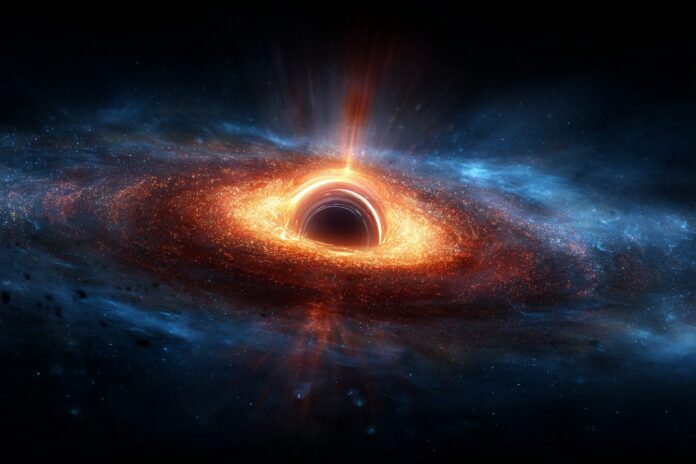The Elusive Nature of Stellar Death
Supernovas, the brilliant explosions signaling the death of massive stars, have captivated astronomers for generations. Most importantly, these cosmic phenomena are exceedingly brief, making them inherently difficult to capture in their nascent stage. Because of this, the earliest clues of their explosive processes vanish even before our most advanced telescopes can snap an image.
In addition, the unpredictable nature of stellar death challenges researchers to constantly adapt their detection strategies. Brief bursts of light, combined with transient signals, require rapid detection and immediate follow-up to be scientifically useful. Therefore, astronomers have long sought innovative methods to overcome these fundamental observational challenges.
Why Supernovas are Difficult to Catch Early
Supernovas often burst unexpectedly onto the cosmic stage, lighting up regions of space that were previously dark and inconspicuous. Because the initial light fades almost as quickly as it appears, critical information about the explosion’s onset is at risk of being lost to time. Most importantly, capturing these fleeting moments requires a perfect blend of timing, technology, and technique.
Besides that, broad sky coverage is essential because pinpointing when and where a star might go supernova is still largely unpredictable. As a result, traditional telescopic methods have struggled to secure early observations. Dense matter clouds and circumstellar materials further complicate early detection by masking the first signals. For a more detailed discussion on these challenges, see the insights on Space.com.
AI and Real-Time Sky Surveys: A Turning Point
Technological advances have recently disrupted traditional observation methods. Because modern observatories integrate wide-field, high-cadence surveys with sophisticated AI, astronomers now detect cosmic anomalies in near real time. Innovations such as the Young Supernova Experiment (YSE) and the Zwicky Transient Facility (ZTF) have radically improved our ability to monitor thousands of square degrees of sky within a single day.
Moreover, the integration of AI offers a revolutionary upgrade. In one significant breakthrough, algorithms instantly flag unusual light curves, enabling scientists to respond within mere hours. This advancement is exemplified by projects referenced at TechExplorist and Bioengineer.org, which illustrate how AI is shifting the paradigm in supernova detection.
Case Study: The Discovery of SN 2023zkd
In July 2023, a dramatic event unfolded 730 million light-years away, reshaping our understanding of stellar death. A massive star, engaged in a gravitational interaction with a black hole, ended its life in a spectacular supernova explosion. Thanks to an AI-driven monitoring system, astronomers detected the signature of this event—designated SN 2023zkd—within hours of its onset.
This early discovery enabled global networks of telescopes to capture crucial photometric and spectroscopic data during the first 24-48 hours. Most importantly, these observations provided unprecedented insights into the dynamics of explosions spurred by interactions with black holes, as described in sources like Astronomy.com and UCSC News.
Why Early Detection Matters
The ability to detect supernovas within hours transforms astronomical research. For instance, it allows scientists to directly observe the energy dispersal and elemental composition in the immediate aftermath of the explosion. Therefore, rapid detection not only preserves fleeting information but also enables a deeper understanding of cosmic processes.
Furthermore, early detection helps diversify our comprehension of various explosion mechanisms. Because capturing the explosion’s beginning leads to improved models of heavy element formation, every minute of advance notice plays a pivotal role. In addition, data gathered in the critical early phases helps refine theories about how binary interactions and black hole dynamics trigger these massive events.
The Future: Automated Astronomy and Expanding Discovery
Looking ahead, the future of astronomy is set to be transformed by advancements in automated observation techniques. Next-generation observatories, such as the Vera C. Rubin Observatory, promise to deliver an unprecedented influx of data. With automated systems in place, intelligent algorithms will efficiently differentiate meaningful cosmic events from background noise.
Because automated detection will consistently flag new and unexpected phenomena, the pace of discovery is expected to accelerate. Most importantly, this will enhance our understanding not only of supernovas but also of other transient events. Consequently, the coming era in time-domain astronomy is poised to reveal deeper insights into how stars live and die, further enriching our knowledge of the universe.
Expanding Our Cosmic Perspective
Historically, astronomical discoveries have followed the limits of human observation. However, technological innovations have set a new standard. Because scientists now monitor vast segments of the sky continuously, the likelihood of missing a supernova’s crucial early moments diminishes significantly.
This breakthrough extends beyond supernovae. As AI-driven techniques become more widespread, the same rapid-response protocols are being applied to other transient celestial events, from gamma-ray bursts to fast radio bursts. In this way, every new discovery adds valuable context to our evolving picture of the cosmos.
Concluding Thoughts on a New Era in Astronomy
In conclusion, the integration of AI with rapid-response telescopic surveys marks a decisive moment in astronomical research. Because the early detection of supernovas now affords scientists an invaluable window into the mechanics of stellar explosions, our cosmic investigations are more precise than ever before.
Besides that, the evolving tools of modern astronomy are reshaping not only our scientific methods but also our understanding of the universe’s evolution. Therefore, these advancements herald a promising future, where the mysteries of cosmic death will be unraveled with clarity and speed, and every fleeting moment will contribute to our broader cosmic narrative.
References
- TechExplorist – Rare type of supernova detected within hours of explosion
- Astronomy.com – AI discovers new type of supernova triggered by black hole
- UCSC News – UC Santa Cruz-based survey uses AI to spot explosive stellar death
- Bioengineer.org – Spotting Supernovae at Lightning Speed
- Space.com – Supernova warning system: Astronomers just found a way to predict explosions



